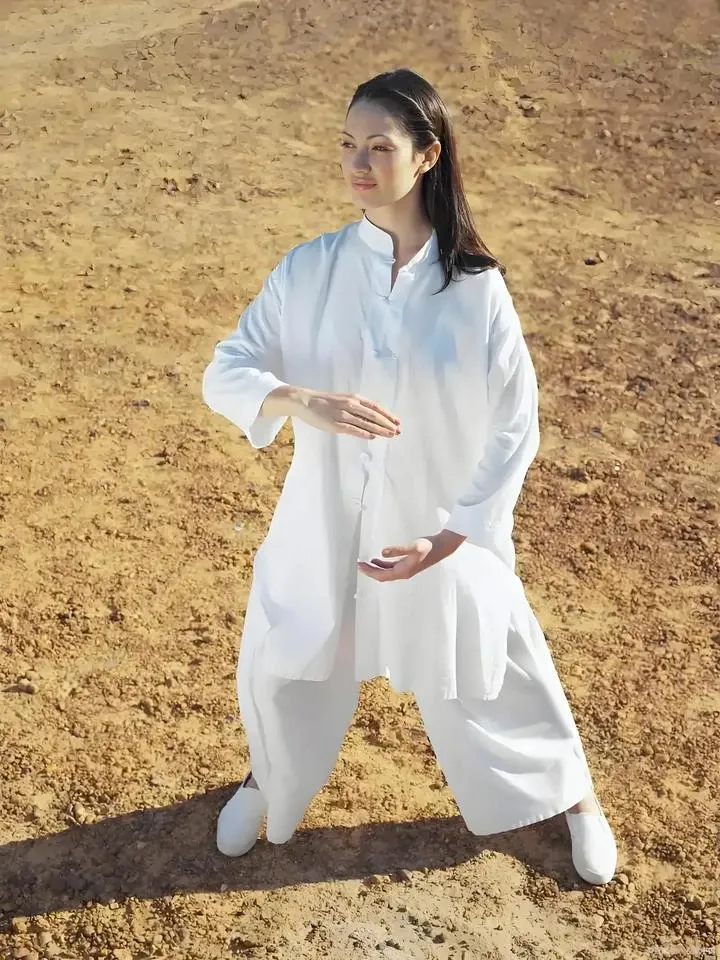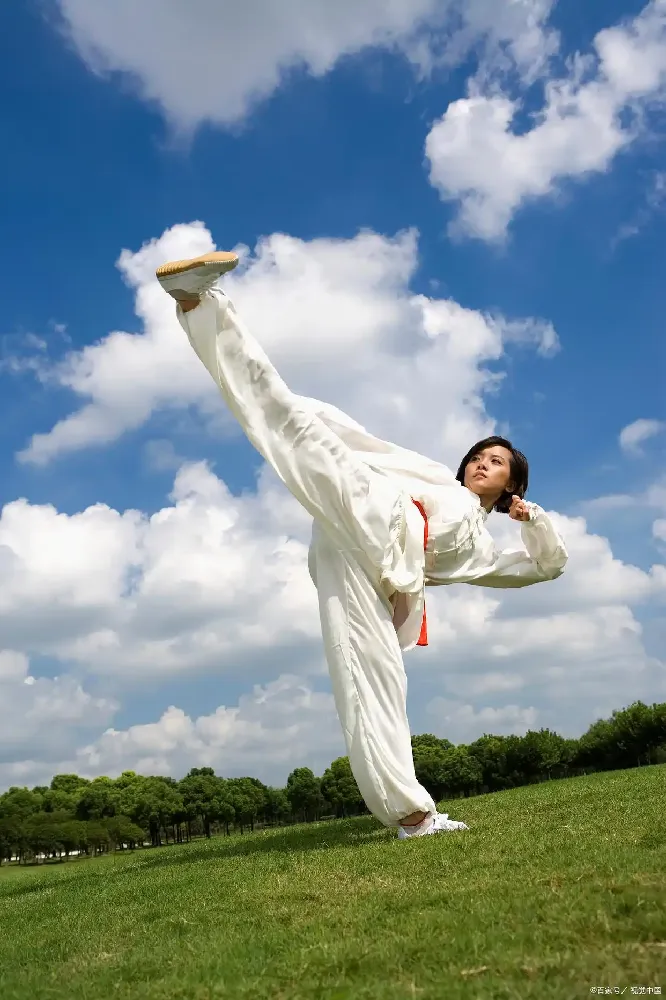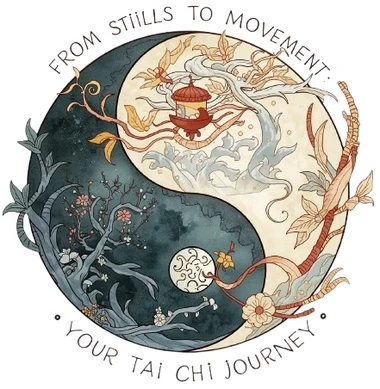Okay, my friend. Let's get real about Tai Chi practice.
You’ve decided to embrace the flow. You’re ready for the slow, graceful movements. You can almost feel the stress melting away. But then… a question pops into your head.
“Wait, when am I actually supposed to do this?”
Should you be up at 5 a.m., silhouetted against the rising sun like a kung fu movie poster? Or is a quiet evening session in the backyard better? And what about facing north? South? Does any of this actually matter, or is it just ancient folklore?
I’ve been there. I’ve dragged myself out of bed in the pitch black, convinced it was the "only" right way. I’ve also practiced in my living room at midnight because that was the only quiet moment I could find.
Here’s the truth I’ve learned after twenty years: The "perfect" time is less about cosmic alignment and more about consistent practice. But—and it’s a big but—the traditional wisdom exists for a powerful reason. It’s not just mysticism; it’s practical, body-aware science.
So, let’s ditch the confusion. I’m going to walk you through a simple, powerful framework I use with my students at Tai Chi Wuji. No, it’s not about Italian food. It’s about creating a practice that’s satisfying, nourishing, and something you keep coming back to.
- Pinpoint Your Personal Energy Cycle
- Align with Nature’s Rhythm (The When)
- Set Your Spatial Compass (The Where)
- Troubleshoot Your Practice
- Act & Make It Your Own
Ready? Let’s roll.

Forget the "Shoulds"
Here’s my first Tai Chi Wuji Exclusive Tip: Track your energy, not just the clock.
We all get told the "best" time is sunrise. But if you’re a night owl, a 5 a.m. practice will feel like torture. You’ll hate it. And you’ll quit. What’s the point of a "perfect" time if it kills your practice?
I learned this from a student, Sarah. A dedicated graphic designer and a true night owl. She forced herself to practice at 6 a.m. for a month. She was miserable, dozing off in her stance. She thought Tai Chi wasn't for her.
Then I told her to switch to 9 p.m.
Game-changer. The house was quiet. Her creative mind was still buzzing, and Tai Chi became her way to wind down. Her form became fluid, her mind calm. She found her time.
Action Step: For one week, don't worry about practicing. Just jot down in your notes app:
- When do you feel most alert? (For me, it's 10 a.m.)
- When does your energy dip? (Hello, 3 p.m. slump.)
- When do you feel physically stiff? (Often first thing in the morning.)
- When do you feel most relaxed?
This isn't about judging. It's about seeing your personal rhythm. This is the foundation of everything.

The Traditional "When"
Now, let’s layer in the ancient wisdom. This is where it gets cool.
Traditional Chinese Medicine views the day as a flow of Yin (calm, cool, restorative) and Yang (active, warm, energetic) energy. Aligning with this flow supercharges your practice.
The Dawn Power-Up (5:00 - 7:00 AM)
- The Traditional Take: This is the "Mao Shi" hour, governed by the Large Intestine and Stomach meridians. It’s when Yang energy rises with the sun. Practicing then helps you capture that fresh, upward-moving energy for the day. It’s like a natural coffee.
- The Science Bit: A 2021 study in the Journal of Sports Sciences found that morning exercise can improve focus and decision-making throughout the day. Your muscles are also fresh from a night's rest, making them more receptive to new movement patterns.
- Best for: Boosting energy, setting a calm intention for the day, improving focus.
The Evening Unwind (8:00 - 10:00 PM)
- The Traditional Take: As Yin energy descends, practice helps you shed the day’s mental clutter and "turbid Qi." It prepares your nervous system for deep, restorative sleep. It’s like hitting the "reset" button.
- The Science Bit: Gentle evening exercise can activate the parasympathetic nervous system—your "rest and digest" mode. It helps lower cortisol levels and can significantly improve sleep quality.
- Best for: Releasing stress, processing the day, combating insomnia.
What's the difference between morning and evening practice? Think of it like this: Morning practice is like charging your battery. Evening practice is like cleaning and maintaining the battery.
The one time to (mostly) avoid? High noon (11 AM - 1 PM). In tradition, this is the peak of Yang fire, and intense activity can overwhelm the heart. Modern science agrees: it's often the hottest part of the day, and exercising in extreme heat is physiologically stressful. A gentle stretch is fine, but a full form might leave you drained.

The "Where" Matters Too
Okay, this is the part that sounds most "woo-woo." But stay with me.
The ancient advice is to "Face South, Back North."
Why?
- Traditional Reason: It aligns your body's energy field with the Earth's magnetic field. South is the direction of fire (Yang, vitality), while North is water (Yin, calm). Facing South is believed to nourish your vitality.
- A Simple, Modern Interpretation: It’s about minimizing distraction. The sun travels East to West. Facing South means you never have the sun directly in your eyes, whether at sunrise or sunset. It’s a practical tip for maintaining visual focus!
My second Tai Chi Wuji Exclusive Tip: Your "South" is any direction that feels safe and peaceful.
I once insisted on practicing in a precise direction in a crowded park. I spent the whole time anxious someone would walk into my "field." It was useless.
The real goal is to find a space where you won't be interrupted. A corner of your bedroom facing the door? Perfect. A spot in the garden with a nice view? Ideal. Consistency in a "good enough" space beats a perfect direction you can only use once a month.
How to Fix Common Problems
You’ve started. But life happens. Let’s troubleshoot.
Problem: "I can't focus, my mind is racing."
- How to fix it: Anchor your breath. Before you even move, stand in Wuji stance for 2 minutes. Just breathe. In through the nose, out through the mouth. Let the thoughts come and go like clouds. Your breath is your anchor to the present moment.
Problem: "I don't have 30 minutes!"
- How to fix it: Micro-practices. You have 5 minutes? Do just the "Wave Hands like Clouds" movement, slowly, focusing on your breath. You have 10 minutes? Practice your opening and closing. A 5-minute, high-quality practice is infinitely better than no practice. A 2023 study found that even 70 seconds of mindful movement can significantly reduce state anxiety. See? No excuses.
Make It Your Own
Here is my final, and most important, Tai Chi Wuji Exclusive Tip: Your practice is a living conversation, not a recorded lecture.
The rules are guides, not gods. The ultimate goal is to build a practice that serves you.
- The best Tai Chi time is the one you’ll actually do.
- The best direction is the one that makes you feel secure and open.
- The best routine is the one you can sustain.
Forget about being perfect. Just show up. Be curious. Some days your form will feel effortless. Other days, it’ll feel like you’re wading through mud. That’s okay. That’s life. And Tai Chi, at its core, is practice for life.
So, take one thing from this guide. Just one. Maybe it’s trying a 9 p.m. session instead of a 6 a.m. one. Maybe it’s just standing in silence for two minutes before you start.
Make it yours. The journey is the goal.
Want to start that conversation with your own body? Explore our foundational courses at Tai Chi Wuji. We give you the map, but you choose the path.
FAQ
Can I practice Tai Chi every day?
Absolutely, and we encourage it! Daily practice, even if short, builds a powerful habit and deepens mind-body connection. The key is listening to your body. Some days, a full form is right; other days, just 5 minutes of standing meditation or basic Qigong is perfect. Consistency over intensity is the golden rule.
What is the single best time to do Tai Chi?
While traditional wisdom points to sunrise and sunset, the true best time is the one you can stick to consistently. Our bodies have unique rhythms. Use our exclusive PASTA framework to pinpoint your personal energy peak—whether you're a morning lark or a night owl—and build your practice around that for the best results.
How long does it take to learn Tai Chi?
Tai Chi is a journey, not a destination. You can learn the basic movements of a short form in 3-6 months. However, "learning" Tai Chi is an ongoing process of refinement that can last a lifetime. The wonderful part is that the core benefits—like better balance, reduced stress, and improved focus—begin from the very first sessions.
Should I always face South when practicing Tai Chi?
Facing South is the traditional ideal, aligning you with the Earth's magnetic field and avoiding the sun's glare. But our most practical tip is this: Your "South" is any direction that feels safe and peaceful. A quiet corner of your home where you won't be interrupted is far better than a perfectly-oriented but distracting space.
What's the difference between morning and evening Tai Chi practice?
Morning Practice is like charging your battery. It harnesses the rising energy of the day to boost your focus and vitality. Evening Practice is like cleaning and maintaining the battery. It helps you shed the day's stress, calm your nervous system, and prepare for deep, restorative sleep. Both are excellent; choose based on your goal for that session.
I'm a beginner. What are the essential Tai Chi basics?
Welcome! Focus on these three pillars first: Posture & Stance: Learn the "Wuji" stance—standing upright, relaxed, and rooted. Breath Coordination: Practice moving slowly while breathing deeply and naturally. Weight Shifting: Master the fundamental skill of smoothly transferring your weight from one leg to the other, which is the foundation of all Tai Chi movement.
